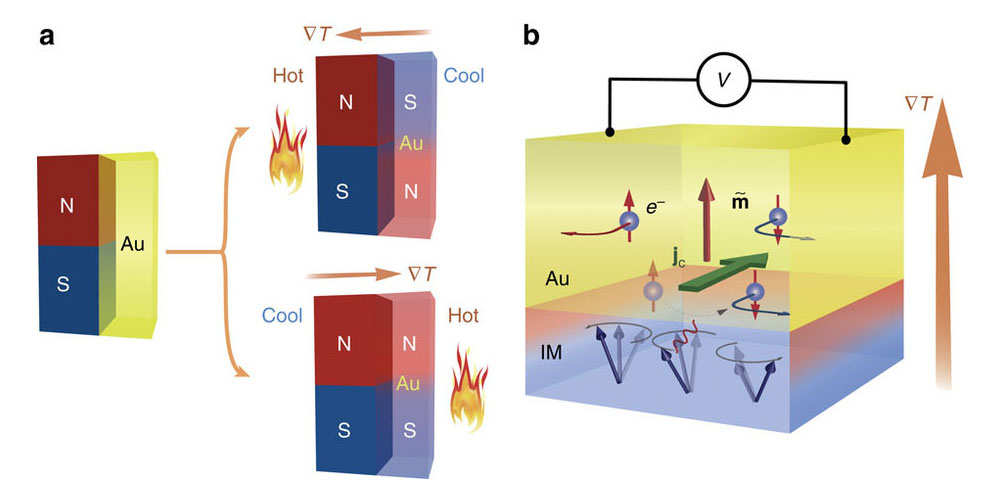Research Abstract
温度勾配により誘起された磁化の観測
Observation of temperature-gradient-induced magnetization
2016年7月26日 Nature Communications 7 : 12265 doi: 10.1038/ncomms12265

非磁性物質を磁化させる際に最適な方法は磁場の印加であるが、磁場を局所的に集めることは困難である。電場を印加することにより、電気磁気効果や電圧誘起磁化を通じた磁化の生成も可能であるが、これは特殊な化合物やヘテロ構造体での発現に限られていた。今回我々は、金などの一般的な金属が磁性絶縁体と接合した際に、温度勾配や磁気共鳴によって磁化しうることを、ホール効果測定によって実証した。これは、異常ホール効果と同様の、磁化の出現に付随する時間反転対称性の破れを直接立証したものである。今回のホール測定技術によって実験的に調べられるようになったホスト金属のスピンホールコンダクタンスのスペクトルは、スピンネルンスト効果などの他のスピンカロリトロニクス現象と密接な関連があり、これらの理論計算へ活用可能である。
Corresponding Author
Applying magnetic fields has been the method of choice to magnetize non-magnetic materials, but they are difficult to focus. The magneto-electric effect and voltage-induced magnetization generate magnetization by applied electric fields, but only in special compounds or heterostructures. Here we demonstrate that a simple metal such as gold can be magnetized by a temperature gradient or magnetic resonance when in contact with a magnetic insulator by observing an anomalous Hall-like effect, which directly proves the breakdown of time-reversal symmetry. Such Hall measurements give experimental access to the spectral spin Hall conductance of the host metal, which is closely related to other spin caloritronics phenomena such as the spin Nernst effect and serves as a reference for theoretical calculation.

